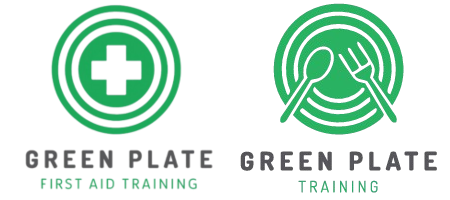| Day 1 |
| Module 1 – Introduction (09:30 – 09:50) |
| Trainer/assessor introduction
Venue health and safety procedures, facilities, and any housekeeping rules.
Qualification information
Administration and course paperwork / register.
Learner Introductions. |
| Module 2 – What is first aid? (09:50 – 10:00) |
| Learning Objective – Identify the role and responsibilities of a First Aider
Definition of first aid
The aims of first aid |
| Module 3 – First Aid Legislation (10:00 – 10:15) |
| Learning Objective – Identify the role and responsibilities of a First Aider
Health and safety regulation
First Aid provision
First Aid Kits and contents
Accident and incident reporting
RIDDOR |
| Module 4 – Responsibilities (10:15 – 10:30) |
| Learning Objective – Identify the role and responsibilities of a First Aider, the need for consent, how to minimise the risk of infection.
Roles and responsibilities of the first aider
Consent
Priorities of first aid treatment
Communication with casualties
Contacting the emergency services
Infection control and minimising risk to self and others. |
| Module 5 – Action in an emergency (10:30 – 10:45) |
| Learning Objective – Conduct a scene survey
Factors involved in an emergency
Assessing the scene (dangers)
Safety approach |
| 15 Minute Break (10:45 – 11:00) |
| Module 6 – Primary Survey (11:00 – 11:30) |
| Learning Objective – conduct a primary survey of a casualty, summon appropriate assistance when necessary.
DR ABC
Safety
Calling for help
Assessing the levels of responsiveness
Airway and breathing checks
Your Bystander |
| Module 7 – Secondary Assessment (11:30 – 11:50) |
| Learning Objective – justify when to place a casualty in the recovery position and demonstrate how to place a casualty in the recovery position.
Casualty assessment
Recovery position – how and why
Scenario 1 – Primary Survey and recovery position |
| Module 8 – The Respiratory System (11:50 – 12:00) |
| Learning Objective – understand the respiratory system in brief detail.
How oxygen enters the body
How we breathe in and out
Composition of air we breathe in and out |
| 60 Minute Break ( 12:00 – 13:00) |
| Module 9 – Resuscitation and AED (13:00 – 14:00) |
| Learning Objective – Identify when to deliver CPR, demonstrate CPR, summon appropriate assistance when necessary.
Principles of cardiopulmonary resuscitation
Current resuscitation guidelines
CPR on your own
CPR with help available
Alternative types of expired air ventilation
Use of face shields and masks
Safe use of AED
Chain of survival
Problems encountered during resuscitation
Scenario 2 – CPR and the safe use of an AED |
| Module 10 – Disorders of Respiration (14:00 – 14:30) |
| Learning Objective – identify when choking is mild and severe, demonstrate how to administer first aid to a casualty who is choking.
Choking – responsive adult
Choking – unresponsive adult
Scenario 3 – Choking |
| Module 11 – Disorders of Circulation (14:30 – 14:50) |
| Learning Objective – Recognise a casualty who is suffering from shock, identify how to treat a casualty suffering from shock casualty.
How the circulatory system works
Blood composition
The definition, causes, recognition and treatment of shock and fainting. |
| 15 Minute Break (14:50 – 15:05) |
| Module 12 – Wounds and Bleeding (15:05 – 15:50) |
| Learning Objective – Identify the severity of external bleeding, how to administer first aid to a casualty with minor bleeding, demonstrate how to control external bleeding.
Types of wound
Type and severity of bleeding
Preventing cross-infection
General rules for bandaging
Treatment of bleeding
Wounds with embedded objects
Internal bleeding recognition and treatment
Amputations
Nosebleeds
Minor cuts and grazes
Bruising
Scenario 4 – Major bleeding and hypovolaemic shock |
| Module 13 – Seizures (15:50 – 16:10) |
| Learning Objective – identify how to administer first aid to a casualty who is experiencing a seizure.
Recognition of a seizure
Treatment for a minor seizure
Treatment for a major seizure
When to contact the emergency services
Scenario 5 – Tonic-clonic seizure |
| Module 14 – Minor burns and Scalds (16:10 – 16:30) |
| Learning objective – identify how to administer first aid to a casualty with minor burns and scalds
Minor burns and scalds
Causes of burns
Classification of burns
Treatment of burns |
| Module 15 – Foreign Objects (16:30 – 17:00) |
| Learning Objective – identify how to administer first aid to a casualty with small splinters
Foreign objects – Nose and ears
Foreign objects – Swallowed
Splinters |
| Module 16 – Course Closure |
| Any final questions
Complete learner declaration
Complete course evaluation
Students will receive a Level 3 Emergency First Aid at Work, 1 day course certificate, which is certificated by First Aid Awards LTD, either hard copy or e-cert depending on chosen option. |
